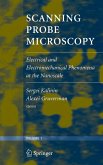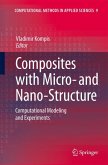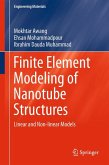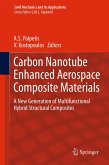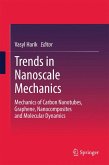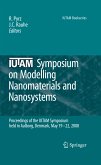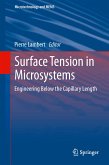Dieser Download kann aus rechtlichen Gründen nur mit Rechnungsadresse in A, B, BG, CY, CZ, D, DK, EW, E, FIN, F, GR, HR, H, IRL, I, LT, L, LR, M, NL, PL, P, R, S, SLO, SK ausgeliefert werden.
PHYSICS TODAY (MAY 2004)
"The potential for the field of nanotechnology to transform civilization-with major applications in areas that span materials, biology, manufacturing, and information technology-is breathtaking ... Progress in nanoscale technology requires a fundamental understanding of the intermediate realms between those scales and a concomitant educational effort to transform into applications the knowledge that scientists have gained in those realms. Foundations of Nanomechanics: From Solid-State Theory to Device Applications, a text on the solid mechanics of very small objects, addresses this educational need head-on. Andrew Cleland is intimately familiar with the task he undertakes in this book ... The book, aimed at advanced undergraduates and beginning graduate students, joins in one treatise an engineering treatment of solids as continuum objects with a condensed matter physics focus on the quantum mechanical nature of solids. Beginning with a bottom-up atomistic description of matter, Cleland seamlessly works his way up, in the first seven chapters, to a continuum description of matter. Topics range from the dynamical motion of a two-atom system and the quantum and thermodynamic behavior of linear chains to atomic lattices, elasticity and deformation of solids, and the dynamical behavior of solids. The final chapters are devoted to dissipation and noise-topics that loom large at the nanoscale-and experimental fabrication techniques for today's nanostructures ... The most apparent use for Cleland's book is in a semester- or year-long, special topic course on nanomechanics. The author also suggests it as a useful reference for the practicing scientist or engineer ... Used a little or used a lot, Foundations of Nanomechanics will be useful all around!"
"The book, aimed at advanced undergraduates and beginning graduate students, joins in one treatise an engineering treatment ofsolids as continuum objects with a condensed matter physics focus on the quantum mechanical nature of solids. ... No book ... fills the unique role provided by Cleland's monograph. ... Used a little or used a lot, Foundations of Nanomechanics will be useful all around!" (Jacqueline Krim, Physics Today, May, 2004)



